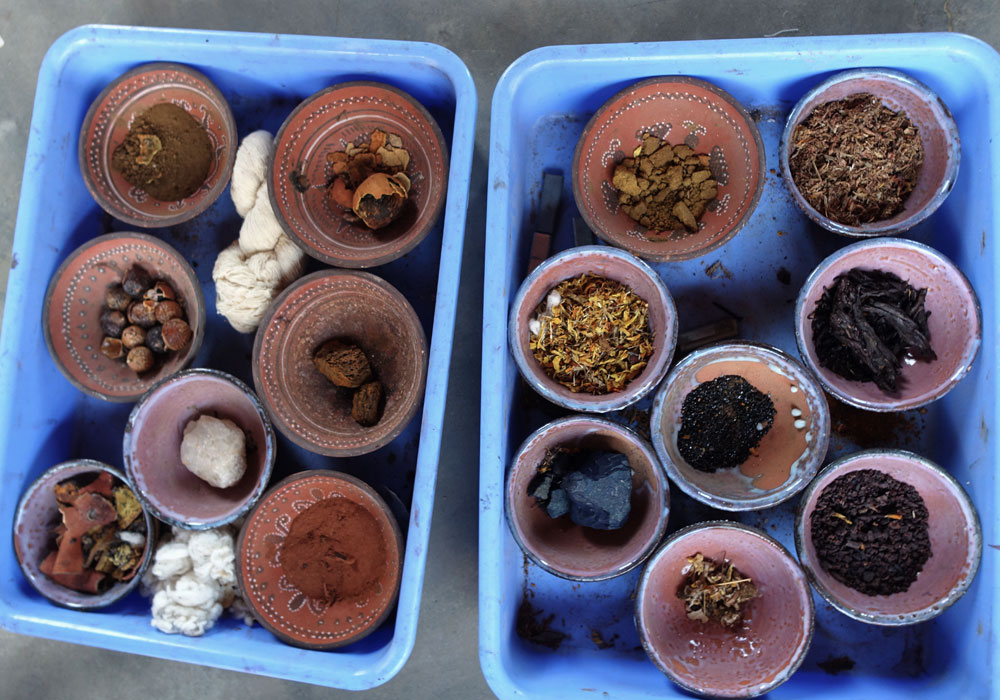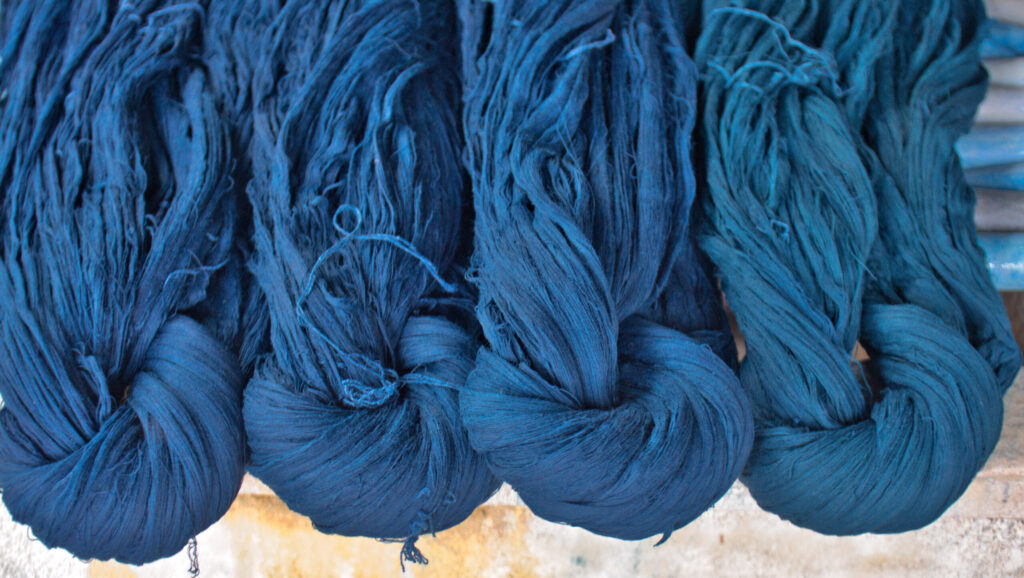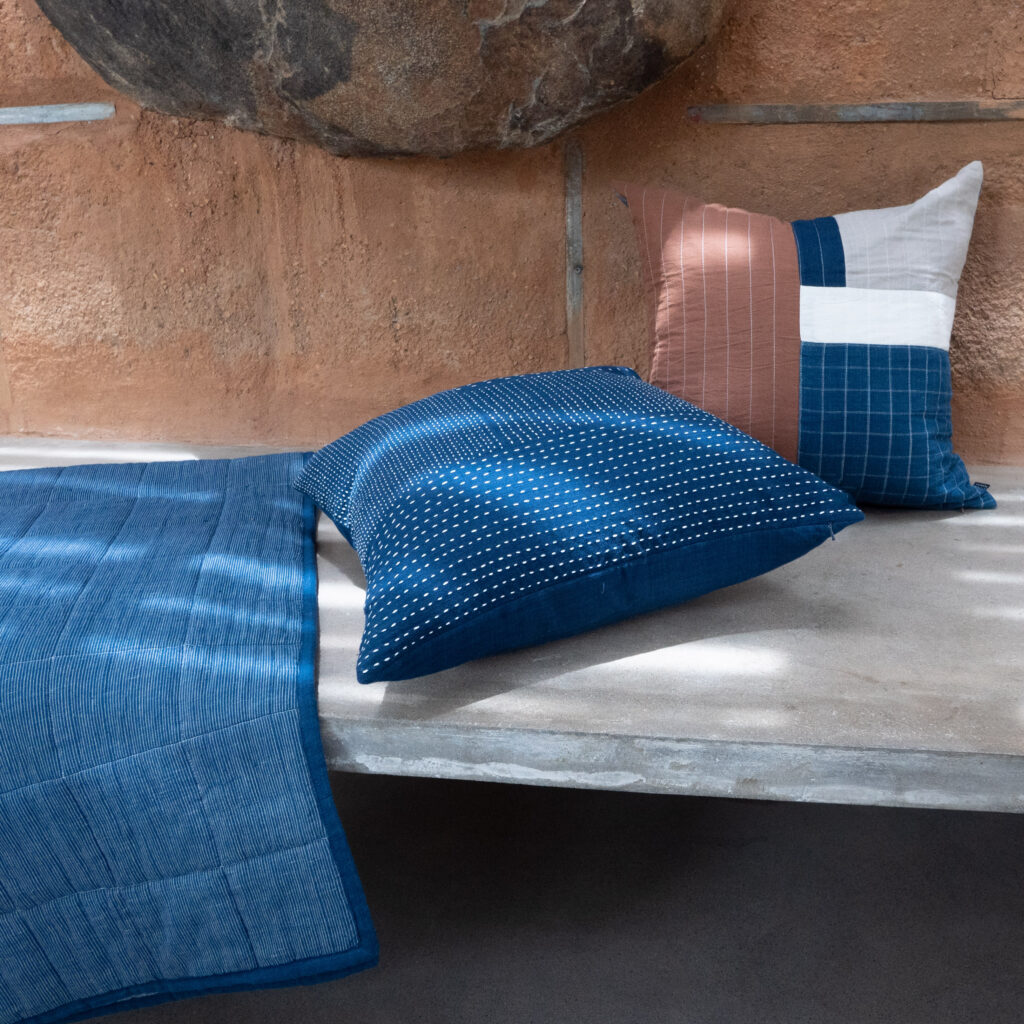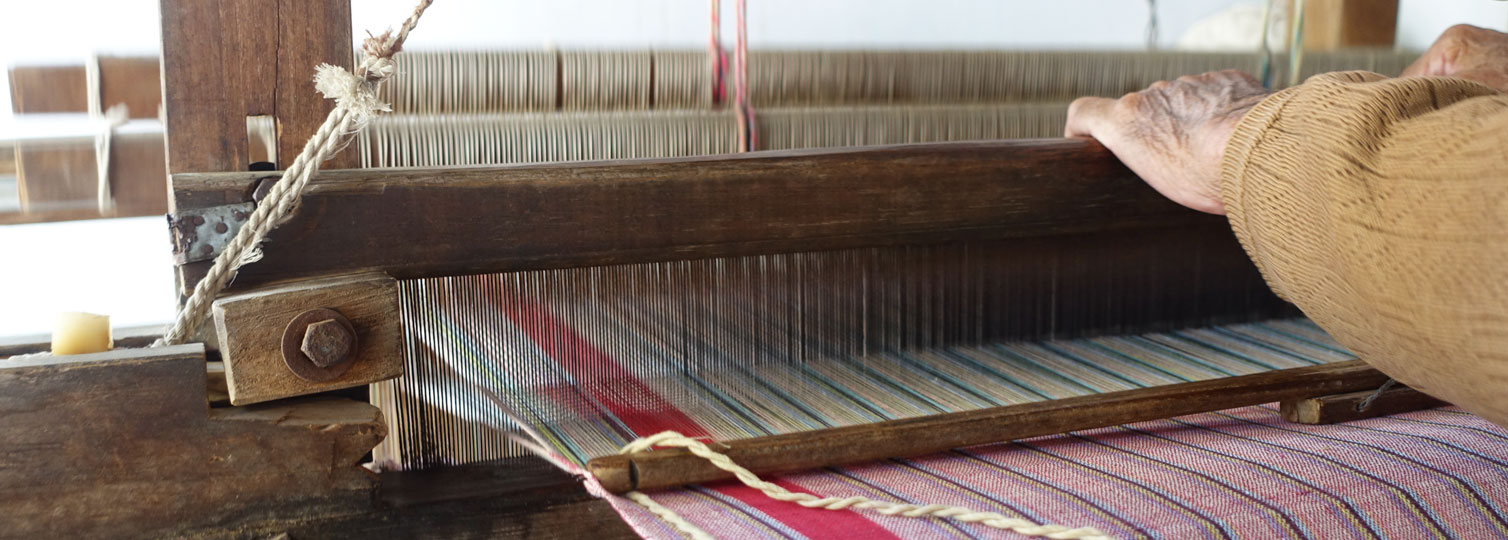
Crewel Embroidery
Embroidery has a long and celebrated history in India, often matching the excellence of its renowned textile traditions. Each region boasts its own distinctive style, with particularly well-known embroidery practices emerging from western, central, and northern India. These techniques can be both decorative and narrative, embodying the geography, culture, and lived experiences of specific communities through locally inspired materials and motifs.
In the northern state of Kashmir, a unique form of chain-stitch embroidery known as Crewel (or Zalakdozi) has flourished for centuries. Worked in wool using a hooked needle called an aari, this technique creates looping, textured stitches that give the embroidery a slightly raised, tactile quality. Artisans traditionally use locally sourced wool, and the motifs often draw from the natural world—featuring the region’s distinctive flowers, fruit, trees, and birds.



Though its exact origins are difficult to trace, crewel embroidery is believed to have travelled to Kashmir along the Silk Route from Central Asia or Persia. What makes this craft so compelling is how it adapted along the way—absorbing regional influences, styles, and aesthetics. In Central Asia, it was historically practiced by women, especially in rural or nomadic communities. In contrast, in Kashmir it became a male-dominated craft, typically carried out in workshops under royal patronage. The 15th-century ruler Sultan Zain-ul-Abidin is credited with inviting master craftsmen from Central Asia and Persia to train local artisans, significantly advancing the craft’s development in the region.

By the 17th century, Kashmiri crewel embroidery had found great favour with both Indian and European nobility—particularly in England. Over time, it became a defining element of Kashmir’s cultural and artistic identity. Today, although the practice continues, many artisans face economic hardship due to reduced demand, and the number of skilled practitioners has declined.

One remarkable aspect of crewel embroidery is its adaptability. Because it was traditionally produced to suit patron demands, artisans have long been open to working with a wide variety of colours, motifs, and designs. A broad repertoire of stitches allows for impressive depth, texture, and nuance—making the technique especially suited for wall hangings, upholstery, and home textiles.
We are honoured to collaborate with master embroiderer Firdous Bhatt, who brings both exceptional skill and a spirit of innovation to his work. Deeply rooted in tradition yet open to experimentation, Firdous is helping to reimagine what crewel can be. Together, we’ve moved from the organic forms and intricate florals of the past toward bold, geometric patterns and striking blocks of colour—opening up new possibilities for a timeless craft.


